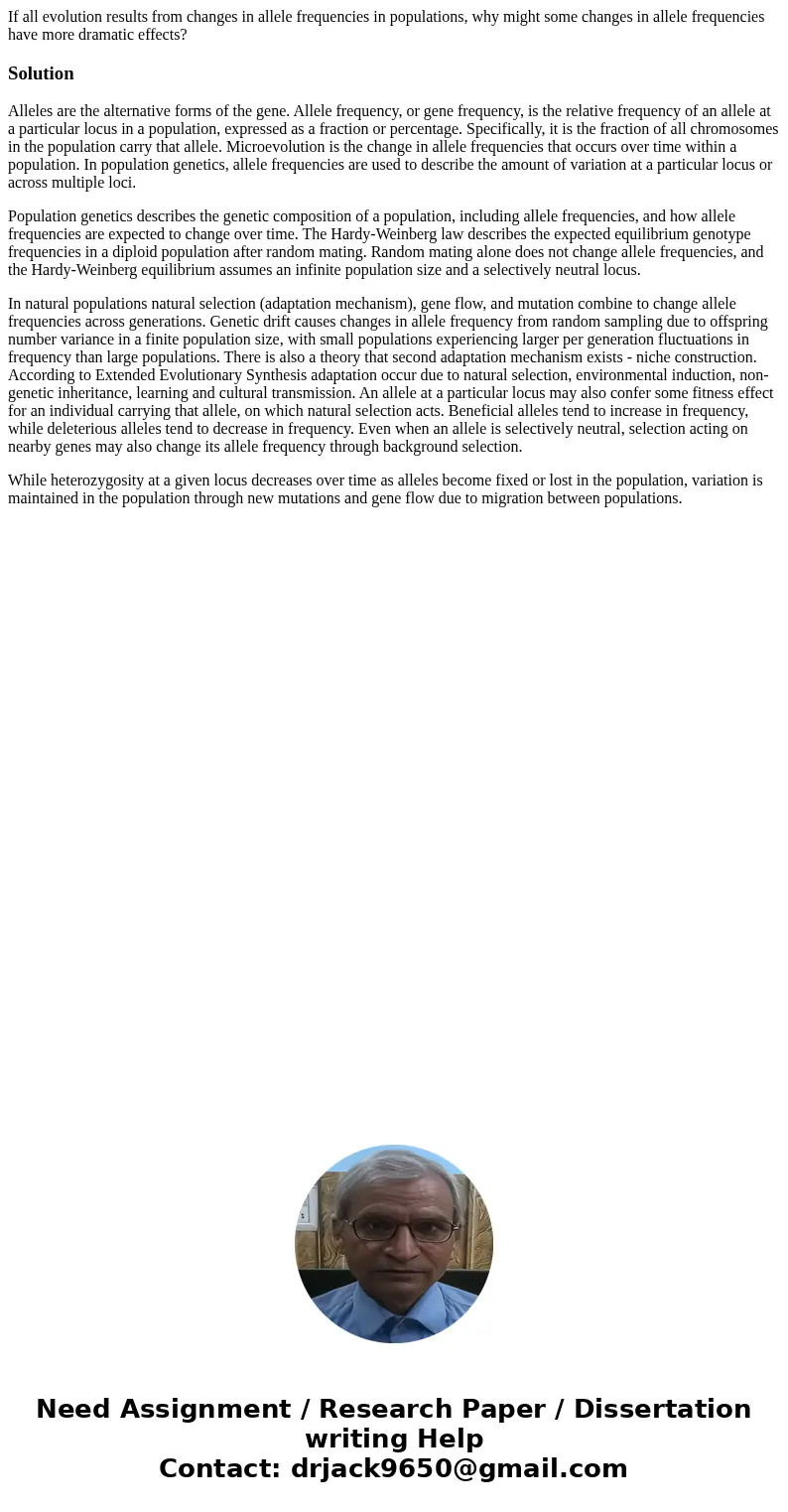If all evolution results from changes in allele frequencies
If all evolution results from changes in allele frequencies in populations, why might some changes in allele frequencies have more dramatic effects?
Solution
Alleles are the alternative forms of the gene. Allele frequency, or gene frequency, is the relative frequency of an allele at a particular locus in a population, expressed as a fraction or percentage. Specifically, it is the fraction of all chromosomes in the population carry that allele. Microevolution is the change in allele frequencies that occurs over time within a population. In population genetics, allele frequencies are used to describe the amount of variation at a particular locus or across multiple loci.
Population genetics describes the genetic composition of a population, including allele frequencies, and how allele frequencies are expected to change over time. The Hardy-Weinberg law describes the expected equilibrium genotype frequencies in a diploid population after random mating. Random mating alone does not change allele frequencies, and the Hardy-Weinberg equilibrium assumes an infinite population size and a selectively neutral locus.
In natural populations natural selection (adaptation mechanism), gene flow, and mutation combine to change allele frequencies across generations. Genetic drift causes changes in allele frequency from random sampling due to offspring number variance in a finite population size, with small populations experiencing larger per generation fluctuations in frequency than large populations. There is also a theory that second adaptation mechanism exists - niche construction. According to Extended Evolutionary Synthesis adaptation occur due to natural selection, environmental induction, non-genetic inheritance, learning and cultural transmission. An allele at a particular locus may also confer some fitness effect for an individual carrying that allele, on which natural selection acts. Beneficial alleles tend to increase in frequency, while deleterious alleles tend to decrease in frequency. Even when an allele is selectively neutral, selection acting on nearby genes may also change its allele frequency through background selection.
While heterozygosity at a given locus decreases over time as alleles become fixed or lost in the population, variation is maintained in the population through new mutations and gene flow due to migration between populations.

 Homework Sourse
Homework Sourse